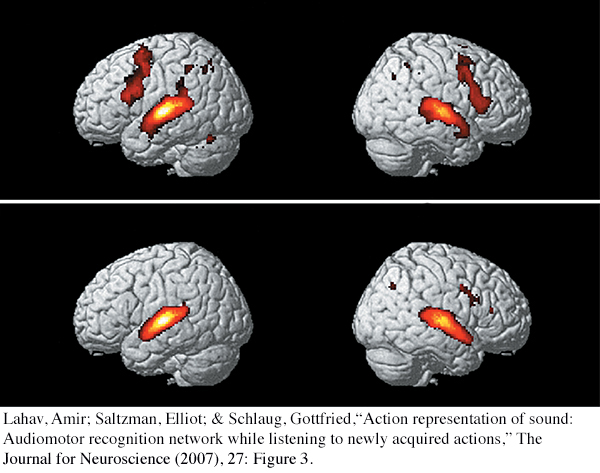
Musical Mirror Neurons Nonmusicians were trained to play a piece of music by ear on a piano keyboard, then underwent a series of fMRI scans (Lahav & others, 2007). Panel (a) shows the participants’ brain activity as they listened to the same music they had already learned to play. Even though they were not moving as they lay in the scanner, motor areas of the brain were activated (dark red). The brighter red/yellow color indicates activation in the brain’s auditory areas. Panel (b) shows participants’ brain activity while they listened to unfamiliar music utilizing the same musical notes but in a different sequence.
As you compare the scans in (a) and (b), notice the extensive activation in moto
Lahav, Amir; Saltzman, Elliot; & Schlaug, Gottfried,“Action representation of sound: Audiomotor recognition network while listening to newly acquired actions,” The Journal for Neuroscience (2007), 27: Figure 3.